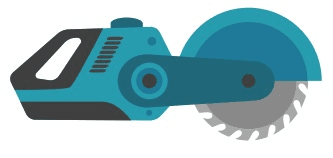10 Undisputed Reasons People Hate Powertools
The Comprehensive Guide to Power Tools: Understanding Their Types, Uses, and Maintenance
Power tools are essential in the contemporary workshop, making it possible for tasks that would otherwise be tiresome and time-consuming when performed with hand tools. Ranging from standard drills to intricate woodworking makers, power tools offer effectiveness and accuracy that can considerably alter the way experts and hobbyists approach their tasks. This post checks out the various kinds of power tools, their applications, upkeep tips, and regularly asked questions.
Kinds Of Power Tools
Power tools are normally categorized into two primary groups: cordless and corded. Each type has its benefits and perfect usages.
1. Cordless Power Tools
Cordless tools operate on rechargeable batteries, offering higher movement and ease of usage. Some common types include:
- Cordless Drill/Driver: Essential for drilling holes and driving screws, a cordless drill is an essential in any toolbox.
- Cordless Circular Saw: Ideal for cutting lumber and other materials, especially when portability is needed.
- Cordless Jigsaw: Useful for making detailed cuts and curves in different materials.
- Cordless Impact Driver: Perfect for driving long screws and fasteners into tough materials quickly.
2. Corded Power Tools
While corded tools may be less portable, they usually provide more power and are frequently used for heavier-duty tasks. Secret examples consist of:
- Table Saw: A stationary tool that provides precision cutting for woodworking projects.
- Miter Saw: Used for making accurate crosscuts and miters in a workpiece.
- Angle Grinder: Useful for cutting or grinding metal and concrete.
- Drill Press: A fixed drill that permits for achieving greater precision in drilling holes.
Comparison Table of Cordless and Corded Power Tools
Function
Cordless Power Tools
Corded Power Tools
Movement
High
Limited by power cable
Power
Less powerful
More effective
Weight
Lighter due to absence of cable
Much heavier due to motor and cable
Battery Life
Restricted by battery life
Constant power supply
Expense
Usually more expensive
Generally more affordable
Applications of Power Tools
Power tools are utilized across numerous industries and activities. Comprehending the right tool for the job can improve performance and outcomes. Some typical applications consist of:
- Construction Projects: Drills, saws, and nailers control job websites for framing and roof.
- Woodworking: Routers, sanders, and jointers assist in developing intricate and sleek wood pieces.
- Automotive Repair: Impact wrenches and air compressors are crucial for working on vehicles.
- Home Improvement: DIY enthusiasts utilize different tools for remodellings, repairs, and landscaping tasks.
Popular Power Tools and Their Uses
Here are some regularly utilized power tools along with their primary applications:
Power Drill:
- Used for drilling holes and securing screws.
- Is available in various sizes for various applications.
Reciprocating Saw:
- Ideal for demolition work and cutting through products like wood, metal, and drywall.
Sander:
- Used for smoothing surfaces, readily available in various types such as orbital and belt sanders.
Router:
- Employed in woodworking for burrowing a location in a piece of wood.
Nail Gun:
- A quick and effective tool for driving nails into wood and other products.
Maintenance Tips for Power Tools
Keeping power tools in ideal condition is essential for security and efficiency. Here are some upkeep suggestions:
Regular Cleaning: Dust and particles can build up in power tools. Regular cleaning assists preserve performance and extends tool life.
Examine Connections and Cords: Regularly inspect for fraying or damage to cables and connections. Change any broken parts right away to avoid mishaps.
Sharpen Blades and Bits: Dull blades can decrease efficiency and accuracy. Routine sharpening makes sure clean cuts and faster operation.
Lubrication: Certain tools need routine lubrication. Consult the user handbook for particular suggestions.
Storage: Store tools in a dry environment and in their cases if available. This secures them from wetness and unintentional damage.
Frequently Asked Questions (FAQs)
1. What safety equipment should be worn when using power tools?
- It is important to wear proper safety gear such as shatterproof glass, hearing defense, gloves, and a dust mask depending upon the tool in use.
2. How do I select the right power tool for a job?
- Think about the particular jobs you need to achieve, the material you'll be dealing with, and the tool's power capacity. Looking into Electric Power Tools For Sale suited for those tasks will help in making the right choice.
3. Are cordless tools as great as corded tools?
- Cordless tools use convenience and portability, while corded tools supply more power for much heavier tasks. Choose based on your specific needs.
4. How often should power tools be kept?
- Routine maintenance should be carried out regularly, ideally after every usage. Comprehensive assessments and maintenance must be done at least once a year.
5. What is the lifespan of a common power tool?
- The lifespan of power tools differs commonly depending upon usage and quality but usually ranges from 5 to 15 years.
Power tools are valuable possessions for both experts and DIY lovers, providing performance and precision unlike any hand tool. Comprehending the various types, applications, and maintenance treatments is vital for optimizing their possible and guaranteeing safety. With proper care and knowledge, these tools can serve users efficiently for several years, eventually improving performance and job outcomes. By investing in quality tools and adhering to maintenance rituals, one can make the most out of every project, regardless of size or intricacy.
